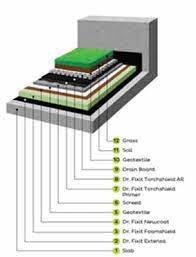Jagvir Goyal
India is a tropical country and its Northern parts face extreme weather conditions with scorching summers extending longer than winters. People living in this part keep looking for solutions that keep their houses cooler in summers and warm in winters. Air conditioners, blowers and water heaters consume substantial energy. To tackle the issue, LEC systems are being invented and popularized by companies believing in sustainable development.
LEC Systems: LEC systems means Low Energy Consumption Systems. These systems are developed by their developers to give such treatment to the roofs and walls of the buildings that make them heat free and leak free. In short, LEC Systems insulate a building to outer weather extremities. Packages are developed to treat the roofs, the walls and the terrace gardens.
Roof Treatment: Under the LEC Systems, the roofs of the building are given water proofing and heat proofing treatment. The treatment involves a layered application of different kinds of membranes and materials. First of all, a foam shield is applied to the concrete slab of the roof. This is followed by the application of two coats of elastomeric material. These coats ensure waterproofing of the roof slab. Thereafter, 3 inch thick plain concrete screed is deposited over elastomeric coatings with proper slope given to concrete surface towards the rain water pipes embedded in the walls.
The sloping surface of the screed is now provided with a geotextile layer. This is finally covered with white coloured, elastomeric acrylic and UV stabled coatings. White colour is essential for good heat reflection. It is ensured that elastomeric coatings have good solar reflectance index (SRI) value. These layers act as thermal insulation layers. Special care is taken of joints of roof with parapet walls to prevent seepage of any rain water from these joints.
Walls treatment: The walls of the buildings are treated with coatings of such elastomeric materials that possess waterproofing properties thus not allowing dampness in walls, have low thermal conductivity thus not allowing heat to pass the walls and good thermal insulation properties. These coatings have high solar reflectance index (SRI) and high total solar reflectivity (TSR). Sometimes, the coatings applied on the walls entrap air in themselves to ensure excellent heat insulation. Overall result is a complete waterproofing of walls, low heat gain by them and cooler internal surfaces of the buildings.
Terrace Garden treatment: Many people prefer to lay terrace gardens in their houses. While opting for terrace gardens, their main worry is that these shouldn’t become a source of permanent dampness in the roof on which terrace garden has been laid. Repeated water application to the plants and grass in the terrace garden is required and may cause dampness in roof slab if it is not treated well before laying the terrace garden.
In such cases, when terrace garden is to be developed, the roof slab is first of all, sprayed with a waterproofing material that sets instantly to produce a breathable and rubberized membrane. It is ensured that this material has good adhesion property with concrete surface. This is followed by a foam shield and elastomeric material coatings as is done in roof treatment. Next, the concrete screed is laid to required slope towards the drain pipe. The concrete screed is now covered with a membrane that is root resistant and waterproofing. Over this layer, the drain board is laid followed by a geo textile layer. Now, the soil is laid over the geotextile layer and grass is grown in the earth layer.
Low Energy Consumption: The above treatment of walls and roof of the building will result in low heat gain by the building and slow transfer of whatever heat the walls and roof gain, to the inside of the building, resulting in cooler internal surfaces of the building. Cooler internal surfaces will reduce the load on air conditioners and minimize their operation thus causing low energy consumption. LEC Systems are considered as successful only if they result in saving power consumption by 50%, reduce internal temperatures by 8 to 10 degree and reduce usage of ACs to minimal.
Durability: As application of LEC Systems demands treatment of walls and roofs of the building and thus involve expenditure, the treatment solutions provided under LEC systems by a company should be long lasting and guaranteed for the customer. For buildings, a guarantee of minimum 25 years should be provided by the LEC system providing company.
Credibility: Mere assurances by a company providing LEC systems may not build its credibility in the eyes of a customer. The solutions provided by the company should comply with the provisions of Energy Conservation Building Code (ECBC) of Bureau of Energy Efficiency (BEE). The company should hold LEED certification for low energy consumption and sustainable construction. The customer should handover the building to the company for application of LEC systems. After the inspection of the building, the service provider should first prepare the blueprint of the work to be carried out by him and discuss it with the building owner along with the cost involved in it.


